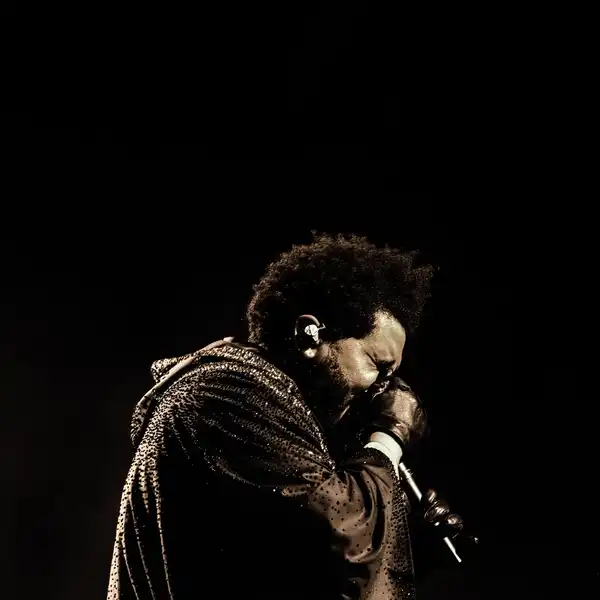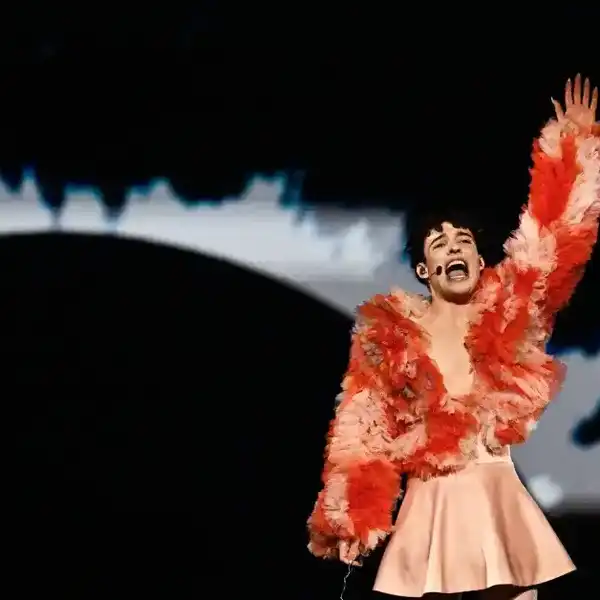advertisement
Billboard is a part of Penske Media Corporation. © 2023 Billboard Media, LLC. All Rights Reserved.
advertisement
Popular
Latest News
advertisement
BILLBOARD CANADA FYI
A weekly briefing on what matters in the music industry
By signing up you agree to Billboard Canada’s privacy policy.
advertisement
advertisement
Pop
Nick Jonas Treats Toronto Fans to a Preview of Upcoming Album 'Sunday Best' at Intimate Toronto Brunch Concert
Jonas played stripped-back hits including "Jealous" with a full choir at the Powder Room in Yorkville. Later that night in Hamilton, Jonas Brothers welcomed special guests Arkells and JP Saxe for surprise guest performances.
12m
Nick Jonas treated a handful of lucky fans to an intimate brunch concert in Toronto on Sunday (Dec. 14).
The Jonas Brothers singer-songwriter decked out Yorkville's new hotspot the Powder Room in a Sunday Best theme, also the name of his upcoming 2026 album. Fans sent baby pictures of themselves, which they found framed on a table when they entered, scrawled with a handwritten message: "you're doing fine."
After the 200 or so fans dined on avocado toast and steak and eggs, Jonas casually strolled onstage to play some casual tunes for the super-fans and VIPs who scored tickets.
As he launched into his biggest solo hit, "Jealous," Jonas was joined by a full 10-piece choir, who brought the song to new level. Jonas has done a gospel version of "Jealous" before, and told the crowd it was an inspiration for the upcoming album, Sunday Best, Nick’s first full-length solo album in five years, an 11-track project exploring his life as a husband to actress Priyanka Chopra and dad to their daughter, Malti, which is due out on Feb. 6.
advertisement
“I’m so excited to share these new stories, candid thoughts, quiet walks home in the city, and snapshots of my life over these past few years,” Jonas said in a statement.
After a few stripped-back favourites, including "Levels" and "Heaven" (which one crowd-member told him was their wedding first dance song), Nick was joined onstage by his non-Jonas Brothers brother Franklin Jonas, who led an onstage Q&A about the upcoming album. Joe Jonas watched on, while Kevin was travelling after an off-day spent with his family in New Jersey.
The album was inspired by his church upbringing, Nick Jonas said, without being overtly religious itself — love and connection substituted for God in the songs, he said. When asked how long the album was in development, he gave a long answer that, in a way, it started 33 years ago (when he was born), but more crucially over the last two years. It was partially inspired by the emotions he and his wife Priyanka Chopra felt after the L.A. fires, worrying their house would be lost as they packed up and went to New York.
advertisement
Another key influence was Canadian songwriter JP Saxe. Though they'd never met prior to this, Jonas was inspired by the transparency of his video about having to cancel his tour due to low ticket sales and invited him to sing at the Jonas Brothers show at Toronto's Rogers Centre this summer.
Saxe was in the room, and came up onstage to talk about their collaboration. Saxe joined Jonas at a writing camp during a six-day break from the Jonas Brothers tour and helped him write six or seven songs, including "Princesses" — a key to the album. Jonas said he was playing princesses with his daughter and just wanted to stay in that world.
"It was our first day writing together," Saxe shared. "You never know what it's going to be like writing with someone. I'm always interested in what makes someone the weirdest. I think artists doing their job right, you give people permission to celebrate the parts of themselves that maybe they don't look at kindly in themselves. But if you can be brave in your weirdness in your songs, in your peculiarities, you kind of give people permission to do the same. And I think that's a really beautiful thing."
advertisement
Jonas played other songs from the upcoming album, some on playback while mouthing the words, and other in official live performances. One was "Gut Punch," which he announced as a "Canadian exclusive" would be out on January 1, 2026. He sang the song, an emotional song about the gut-punch of learning you're being too hard on yourself.
advertisement
After fans left with Sunday Best activity and colouring books and cloth napkins, Jonas travelled over to Hamilton for a Jonas Brothers concert at the newly transformed TD Coliseum in Hamilton. During the group’s anniversary Greetings From Your Hometown tour, they’ve become known for bringing out special guests who are relevant to the area they’re in. Saxe reprised his guest spot from this summer and earlier that morning, performing his piano ballad “A Little Bit Yours."
@user7152025x Jonas Brothers bring out JP Saxe to perform “A Little Bit Yours” in Hamilton tonight on the #greetintsfromyourhometowntour @jpsaxe
Later, fans were in for a second homecoming treat, as Hamilton-bred band, Arkells, brought their high energy and homegrown charm to the city’s crowd.
“One of the things that we’ve had a lot of fun doing is celebrating heroes of their hometowns,” Nick Jonas shared with concertgoers, referencing the trio’s tour name. “We made a phone call and asked if this band would pop up and do a song for their hometown crowd here in Hamilton. And they said yes.”
Led by frontman Max Kerman, the Arkells took the stage to perform their hit “Leather Jacket.”
@much The Jonas Brothers brought out Hamilton’s very own @Arkells ❤️🇨🇦 #jonasbrothers #greetingsfromyourhometown
After their performance, Kerman took the chance to address the crowd.
“I gotta say tonight, we are all Jonas Brothers,” introducing the band — Anthony Carone, Tim Oxford, Mike DeAngelis and Nick Dika — as members of the Jonas clan. “On the keyboard, we have Mr. Tony Jonas, on the drums, we have Mr. Tim Jonas, on the guitar, we have Mr. Mikey Jonas,” he shared. “I’m Max Jonas for the evening [and] on the bass guitar, we have Nick Jonas — the other one."
advertisement
@arkellsmusic An honour to join the fam for the evening #jonasbrothers #family #surpriseguest
Arkells will return to TD Coliseum next year, when they perform at the 2026 Juno Awards.
keep readingShow less
advertisement
Popular
advertisement
Published by ARTSHOUSE MEDIA GROUP (AMG) under license from Billboard Media, LLC, a subsidiary of Penske Media Corporation.
advertisement


















